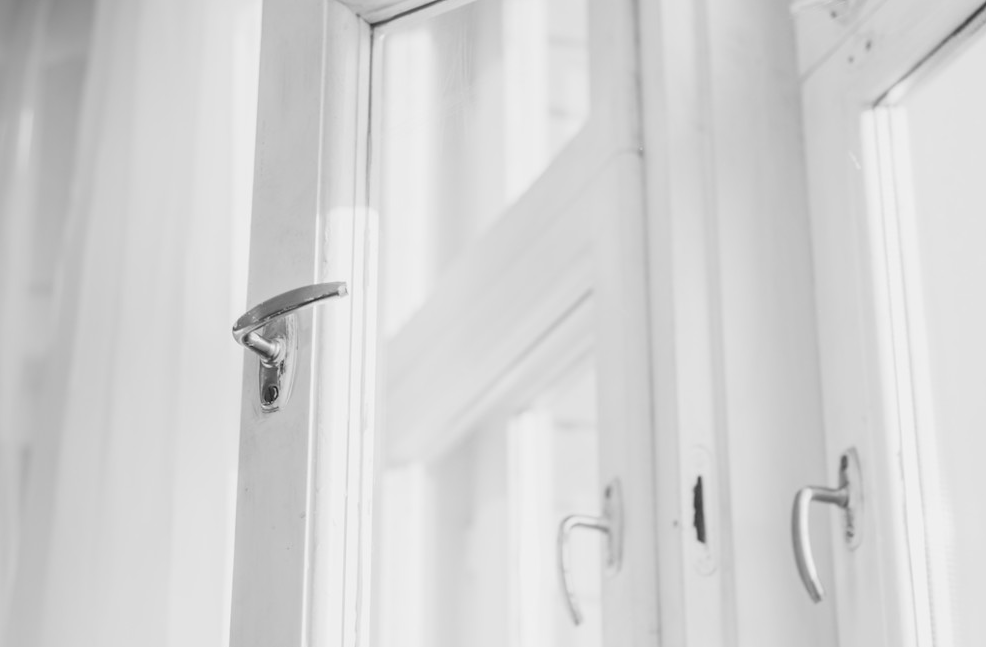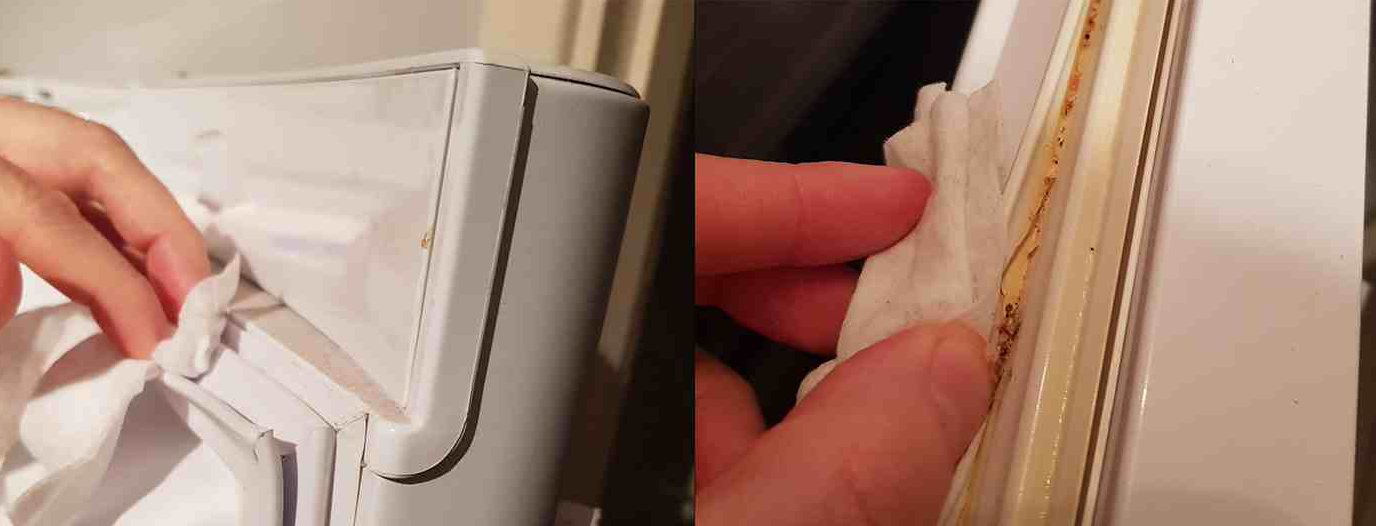The best cleaner for PVC doors would be a mild, eco-friendly detergent that effectively removes stains without damaging the material.
Types of PVC Doors
When it comes to PVC doors, it’s essential to understand the different types available in the market. Your choice will influence not only the aesthetic of your home but also the cleaning regimen you should follow. Here we explore the three primary types of PVC doors: Solid PVC Doors, PVC Coated Doors, and PVC Folding Doors.

Solid PVC Doors
Solid PVC doors are made entirely out of Polyvinyl Chloride. These doors are known for their durability and resistance to weather conditions. They are often used in bathrooms, kitchens, and other areas exposed to moisture.
- Key Features
- High durability
- Water-resistant
- Easy to clean
- Common Uses
- Bathrooms
- Kitchens
- Outdoor sheds
- Cleaning Tips
- Wipe down with a mild detergent
- Avoid abrasive cleaners
PVC Coated Doors
PVC coated doors are generally wooden doors that have a coating of PVC material. This coating provides a level of water resistance while maintaining a more traditional look that many homeowners desire.
- Key Features
- Aesthetic appeal
- Some level of water resistance
- More affordable than solid PVC doors
- Common Uses
- Living rooms
- Bedrooms
- Cleaning Tips
- Use a mild cleaner designed for coated surfaces
- A soft, damp cloth is usually sufficient for routine cleaning
- Check the manufacturer’s guidelines for specific cleaning instructions
PVC Folding Doors
These doors are particularly useful in spaces where saving space is a priority. PVC Folding Doors are often used to separate rooms or as patio doors.
- Key Features
- Space-saving design
- Lightweight
- Often used in internal settings
- Common Uses
- Room dividers
- Patios
- Cleaning Tips
- Dust regularly to maintain appearance
- Wipe down with a damp cloth
- Mild soap and water are usually effective for cleaning
Common Stains and Issues
PVC doors offer durability and aesthetic appeal but they are not immune to stains and other common issues. Knowing how to identify and treat these issues will help keep your doors looking their best. In this section, we’ll look at Dust and Dirt, Water Stains, and Mold and Mildew.
Dust and Dirt
Over time, dust and dirt can accumulate on the surface and corners of your PVC doors. Not only does this dull the appearance, but it can also scratch the surface if not dealt with properly.
- Key Features
- Light grey or brown coating on the surface
- Gritty texture
- Common Solutions
- Use a microfiber cloth for dusting
- Employ a mild detergent for a more in-depth clean
- Prevention
- Regular dusting
- Keeping the surrounding area clean
Water Stains
Water stains are particularly common in areas with high humidity or doors exposed to the elements. These stains can range from light to dark and can affect the look of your doors.
- Key Features
- Dark or light spots, often with a ring shape
- May be difficult to remove with a simple wipe-down
- Common Solutions
- Use water stain removers specifically designed for PVC surfaces
- Wipe down the area immediately after exposure to water
- Prevention
- Install water-repellent seals
- Keep the door dry
Mold and Mildew
Mold and mildew can form in the nooks and crannies of your PVC doors, especially if they are often exposed to moisture. These fungi not only ruin the appearance but can also pose health risks.
- Key Features
- Black or green spots
- Musty odor
- Common Solutions
- A mixture of vinegar and water can often remove mold
- For more severe cases, consider using specialized mold removers
- Prevention
- Regular cleaning with anti-fungal solutions
- Ensuring good ventilation
Types of Cleaners
Choosing the right cleaner for your PVC doors is crucial to maintain their longevity and appearance. Cleaners can generally be classified into three categories: Chemical Cleaners, Natural Cleaners, and Homemade Solutions. Let’s delve into the details of each type to help you make an informed decision.
Chemical Cleaners
Chemical cleaners are often the go-to solution for tough stains and grime. They contain powerful ingredients that can dissolve dirt, mold, and water stains effectively.
- Key Features
- Strong cleaning agents
- Quick action
- May contain harsh chemicals like ammonia or bleach
- Common Uses
- Deep cleaning
- Removal of stubborn stains
- Precautions
- Always wear gloves and ensure good ventilation
- Test on a small area before applying to the entire door
Natural Cleaners
If you are looking for an eco-friendly option, natural cleaners are a great choice. They are typically free of harsh chemicals, making them safer for both the environment and your family.
- Key Features
- Eco-friendly
- Mild cleaning agents
- Common ingredients include vinegar, baking soda, and essential oils
- Common Uses
- Regular cleaning
- Light to moderate stains
- Precautions
- May require more effort to remove tough stains
- Check compatibility with your specific type of PVC door

Homemade Solutions
Sometimes, effective cleaners can be concocted right in your kitchen. Homemade solutions allow you to control the ingredients, making them customizable for your specific cleaning needs.
- Key Features
- Customizable
- Cost-effective
- Ingredients often found in household kitchens like lemon and salt
- Common Uses
- Routine maintenance
- Specific stain removal
- Recipes
- Vinegar and water for mold and mildew
- Lemon and salt for brighter surfaces
Cleaning Tools
The tools you use for cleaning your PVC doors are almost as important as the cleaners themselves. The right tools can make the cleaning process efficient and effective, while the wrong ones could scratch or damage the surface. Let’s examine the key tools: Microfiber Cloths, Scrubbing Brushes, and Sponges.
Microfiber Cloths
Microfiber cloths are versatile and effective tools for cleaning PVC doors. These cloths can pick up even the smallest particles of dirt, leaving your doors sparkling clean.
- Key Features
- Highly absorbent
- Soft texture minimizes scratching
- Can be used wet or dry
- Common Uses
- Dusting
- Wiping down after applying cleaner
- Tips
- Always wash the cloth after use to avoid the spread of dirt and bacteria
- You can find various types of microfiber cloths suited for different cleaning tasks
Scrubbing Brushes
For more stubborn stains, a scrubbing brush can come in handy. It allows you to apply more pressure than a cloth, making it easier to remove grime.
- Key Features
- Stiff bristles
- Ergonomic handle for better grip
- Common Uses
- Scrubbing off stubborn stains
- Cleaning nooks and corners
- Precautions
- Do not use on delicate or coated surfaces as it may scratch
- Always test on a small, inconspicuous area first
Sponges
Sponges are great for a variety of cleaning tasks, from wiping down surfaces to applying cleaners evenly. They are particularly useful for cleaning larger surface areas.
- Key Features
- Soft yet firm texture
- Good water retention
- Common Uses
- General cleaning tasks
- Applying liquid cleaners
- Tips
- Always rinse thoroughly after use to remove any cleaner residue
- For hygiene reasons, consider using separate sponges for different tasks or areas

Cleaning Procedures
Maintaining the cleanliness and durability of your PVC doors involves different procedures depending on the situation. We can generally categorize these into Regular Maintenance, Deep Cleaning, and Special Treatments for Stubborn Stains.
Regular Maintenance
Regular maintenance is crucial to extend the lifespan and maintain the appearance of your PVC doors. Simple practices can prevent the buildup of dirt, dust, and grime.
- Key Steps
- Wipe down the surface with a microfiber cloth
- Use a mild cleaner for a gentle clean
- Frequency
- Weekly or bi-weekly, depending on the door’s location and exposure to dirt
- Tips
- Frequent light cleaning is better than occasional intense scrubbing
- Don’t forget to clean the door handles and frames
Deep Cleaning
Every once in a while, your PVC doors may require a more intensive clean to remove stubborn stains and grime.
- Key Steps
- Use a scrubbing brush for tough spots
- Apply a chemical cleaner designed for PVC
- Frequency
- Monthly or quarterly, depending on the door’s condition and usage
- Precautions
- Always test the cleaner on a small, hidden area before full application
- Make sure to wear gloves and ventilate the area well during the process
Special Treatments for Stubborn Stains
For stains that don’t go away with regular or deep cleaning, special treatments may be necessary.
- Key Steps
- Identify the type of stain (e.g., water stains, mold, rust)
- Use specialized cleaners specifically designed for that kind of stain
- Frequency
- As needed
- Precautions
- Always read and follow the manufacturer’s instructions for the specialized cleaner
- Ensure proper safety measures, like wearing masks or gloves
